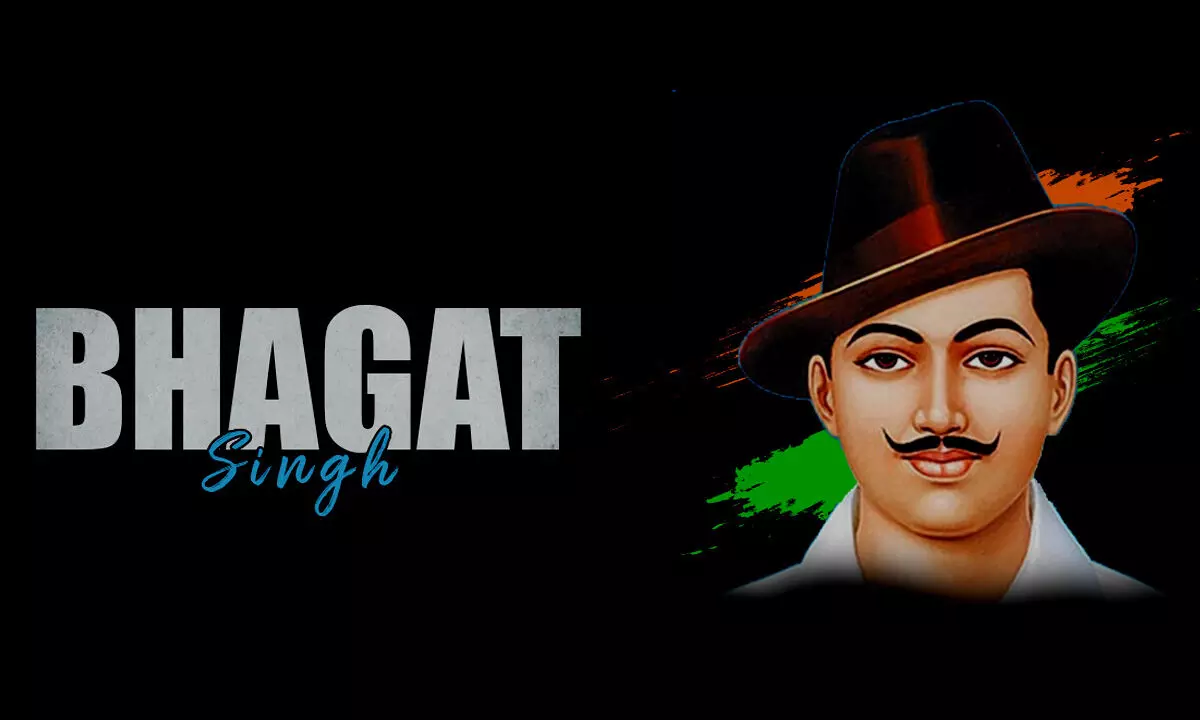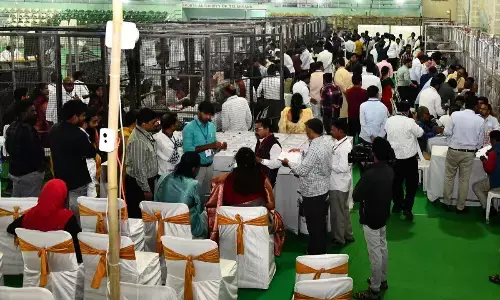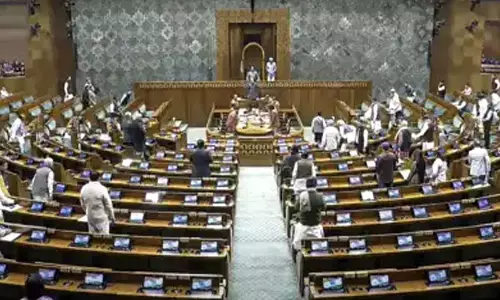Inquilab Zindabad- Bhagat Singh The Great Indian Revolutionary

Bhagat Singh was born on September 28, 1907, at Banga in Lyallpur district (now Pakistan) to Kishan Singh and Vidyavati. At the time of his birth, his father Kishan Singh, uncles Ajit and Swaran Singh were in jail for demonstrations against the Colonization Bill implemented in 1906.
Bhagat Singh was born on September 28, 1907, at Banga in Lyallpur district (now Pakistan) to Kishan Singh and Vidyavati. At the time of his birth, his father Kishan Singh, uncles Ajit and Swaran Singh were in jail for demonstrations against the Colonization Bill implemented in 1906. His uncle, Sardar Ajit Singh, was a proponent of the movement and established the Indian Patriots' Association. He was well-supported by his friend Syed Haidar Raza in organizing the peasants against the Chenab Canal Colony Bill. Ajit Singh had 22 cases against him and was forced to flee to Iran. His family was the supporter of the Ghadar party and the politically aware environment at home helped incite a sense of patriotism in the heart of young Bhagat Singh.
In March 1925, inspired by European nationalist movements, the Naujawan Bharat Sabha was formed with Bhagat Singh, as its secretary. Bhagat singh also joined the Hindustan Republican Association (HRA), a radical group, which he later rechristened as the Hindustan Socialist Republican Association (HSRA) along with fellow revolutionaries Chandrashekhar Azad and Sukhdev. He returned to his home in Lahore after assurances from his parents that he would not be compelled to get married. He established contact with the members of the Kirti Kisan Party and started contributing regularly to its magazine, the "Kirti". As a student, Bhagat Singh was an avid reader and he would read up about European nationalist movements. Inspired by the writings of Friedrich Engels and Karl Marx, his political ideologies took shape and he became more inclined towards a socialist approach. He also wrote in newspapers like “Veer Arjun” "under several pseudonyms.
National Movement & Revolutionary Activities
Initially, Bhagat Singh’s activities were limited to writing corrosive articles against the British Government, printing and distributing pamphlets outlining principles of a violent uprising, aimed at overthrowing the Government. Considering his influence on the youth, and his association with the Akali movement, he became a person of interest for the government.The police arrested him in a bombing case that took place in 1926 in Lahore. He was released 5 months later on a 60,000 rupees bond.
On 30 October 1928, Lala Lajpat Rai led an all-parties procession and marched towards the Lahore railway station to protest against the arrival of the Simon Commission. The police resorted to a brutal lathi charge to thwart the advancement of the protesters. The confrontation left Lala Lajpat Rai with severe injuries and he succumbed to his injuries on November17, 1928. As a revenge for the death of Lala Lajpat Rai, Bhagat Singh and his associates plotted the assassination of James A. Scott, the Superintendent of Police, believed to have ordered the lathi charge. The revolutionaries, mistaking J.P. Saunders, an Assistant Superintendent of Police, as Scott, killed him instead. Bhagat Singh quickly left Lahore to escape his arrest. To avoid recognition, he shaved his beard and cut his hair, a violation of the sacred tenets of Sikhism.
In response to the formulation of Defence of India Act, the Hindustan Socialist Republican Association planned to explode a bomb inside the assembly premises, where the ordinance was going to be passed. On April 8 1929, Bhagat Singh and Batukeshwar Dutt threw a bomb onto the corridors of the assembly, shouted 'Inquilab Zindabad!' and threw pamphlet outlining their missive into the air. The bomb was not meant to kill or injure anyone and therefore it was thrown away from the crowded place, but still several council members were injured in the commotion. Following the blasts both Bhagat Singh and Batukeshwar Dutt courted arrest.
1929 Assembly Incident Trial
The dramatic demonstration of protest was met with widespread criticisms from the political arena. Singh responded – “Force when aggressively applied is 'violence' and is, therefore, morally unjustifiable, but when it is used in the furtherance of a legitimate cause, it has its moral justification.”
Trial proceedings commenced in May where Singh sought to defend himself, while Batukeshwar Dutt was represented by Afsar Ali. The court ruled in favour of a life sentence citing malicious and unlawful intent of the explosions.
Lahore Conspiracy Case & Trial
Soon after the sentencing, the police raided the HSRA bomb factories in Lahore and arrested several prominent revolutionaries.Three individuals, Hans Raj Vohra, Jai Gopal and Phanindra Nath Ghosh turned approver for the Government which led to a total of 21 arrests including those of Sukhdev, Jatindra Nath Das and Rajguru. Bhagat Singh was re-arrested for the Lahore Conspiracy case, murder of Assistant Superintendent Saunders and bomb manufacturing.
Trial started against 28 accused in a special session court presided over by Judge Rai Sahib Pandit Sri Kishen, on July10, 1929.
Meanwhile, Singh and his fellow inmates declared an indefinite hunger strike in protest of the prejudiced difference in treatment of the white versus native prisoners and demanded to be recognised as ‘political prisoners’. The hunger strike received tremendous attention from the press and gathered major public support in favour of their demands. Death of Jatindra Nath Das, after a 63 days long fast, led to the negative public opinions intensifying towards the authorities. Bhagat Singh finally broke his 116-day fast, on request of his father and Congress leadership, on October 5, 1929.
Owing to the slow pace of the legal proceedings, a special tribunal consisting of Justice J. Coldstream, Justice Agha Hyder and Justice G. C. Hilton was set up on the directives of the Viceroy, Lord Irwin on 1 May 1930. The tribunal was empowered to proceed without the presence of the accused and was a one-sided trial that hardly adhered to the normal legal rights guidelines.
The tribunal delivered its 300-page judgement on 7 October 1930. It declared that irrefutable proof has been presented confirming the involvement of Singh, Sukhdev and Rajguru in the Saunders murder. Singh admitted to the murder and made statements against the British rule during the trial. They were sentenced to be hanged till death.
Execution
On March 23, 1931, 7:30 am, Bhagat Singh was hanged in Lahore Jail with his comrades Rajguru and Sukhdev. It is said that the trio proceeded quite cheerfully towards the gallows while chanting their favourite slogans like “Inquilab Zindabad” and “Down with British Imperialism”. Singh and his peers were cremated at Hussainiwala on the banks of Sutlej River.
Bhagat Singh was born on September 28, 1907, at Banga in Lyallpur district (now Pakistan) to Kishan Singh and Vidyavati. At the time of his birth, his father Kishan Singh, uncles Ajit and Swaran Singh were in jail for demonstrations against the Colonization Bill implemented in 1906. His uncle, Sardar Ajit Singh, was a proponent of the movement and established the Indian Patriots' Association. He was well-supported by his friend Syed Haidar Raza in organizing the peasants against the Chenab Canal Colony Bill. Ajit Singh had 22 cases against him and was forced to flee to Iran. His family was the supporter of the Ghadar party and the politically aware environment at home helped incite a sense of patriotism in the heart of young Bhagat Singh.
In March 1925, inspired by European nationalist movements, the Naujawan Bharat Sabha was formed with Bhagat Singh, as its secretary. Bhagat singh also joined the Hindustan Republican Association (HRA), a radical group, which he later rechristened as the Hindustan Socialist Republican Association (HSRA) along with fellow revolutionaries Chandrashekhar Azad and Sukhdev. He returned to his home in Lahore after assurances from his parents that he would not be compelled to get married. He established contact with the members of the Kirti Kisan Party and started contributing regularly to its magazine, the "Kirti". As a student, Bhagat Singh was an avid reader and he would read up about European nationalist movements. Inspired by the writings of Friedrich Engels and Karl Marx, his political ideologies took shape and he became more inclined towards a socialist approach. He also wrote in newspapers like “Veer Arjun” "under several pseudonyms.
National Movement & Revolutionary Activities
Initially, Bhagat Singh’s activities were limited to writing corrosive articles against the British Government, printing and distributing pamphlets outlining principles of a violent uprising, aimed at overthrowing the Government. Considering his influence on the youth, and his association with the Akali movement, he became a person of interest for the government.The police arrested him in a bombing case that took place in 1926 in Lahore. He was released 5 months later on a 60,000 rupees bond.
On 30 October 1928, Lala Lajpat Rai led an all-parties procession and marched towards the Lahore railway station to protest against the arrival of the Simon Commission. The police resorted to a brutal lathi charge to thwart the advancement of the protesters. The confrontation left Lala Lajpat Rai with severe injuries and he succumbed to his injuries on November17, 1928. As a revenge for the death of Lala Lajpat Rai, Bhagat Singh and his associates plotted the assassination of James A. Scott, the Superintendent of Police, believed to have ordered the lathi charge. The revolutionaries, mistaking J.P. Saunders, an Assistant Superintendent of Police, as Scott, killed him instead. Bhagat Singh quickly left Lahore to escape his arrest. To avoid recognition, he shaved his beard and cut his hair, a violation of the sacred tenets of Sikhism.
In response to the formulation of Defence of India Act, the Hindustan Socialist Republican Association planned to explode a bomb inside the assembly premises, where the ordinance was going to be passed. On April 8 1929, Bhagat Singh and Batukeshwar Dutt threw a bomb onto the corridors of the assembly, shouted 'Inquilab Zindabad!' and threw pamphlet outlining their missive into the air. The bomb was not meant to kill or injure anyone and therefore it was thrown away from the crowded place, but still several council members were injured in the commotion. Following the blasts both Bhagat Singh and Batukeshwar Dutt courted arrest.
1929 Assembly Incident Trial
The dramatic demonstration of protest was met with widespread criticisms from the political arena. Singh responded – “Force when aggressively applied is 'violence' and is, therefore, morally unjustifiable, but when it is used in the furtherance of a legitimate cause, it has its moral justification.”
Trial proceedings commenced in May where Singh sought to defend himself, while Batukeshwar Dutt was represented by Afsar Ali. The court ruled in favour of a life sentence citing malicious and unlawful intent of the explosions.
Lahore Conspiracy Case & Trial
Soon after the sentencing, the police raided the HSRA bomb factories in Lahore and arrested several prominent revolutionaries.Three individuals, Hans Raj Vohra, Jai Gopal and Phanindra Nath Ghosh turned approver for the Government which led to a total of 21 arrests including those of Sukhdev, Jatindra Nath Das and Rajguru. Bhagat Singh was re-arrested for the Lahore Conspiracy case, murder of Assistant Superintendent Saunders and bomb manufacturing.
Trial started against 28 accused in a special session court presided over by Judge Rai Sahib Pandit Sri Kishen, on July10, 1929.
Meanwhile, Singh and his fellow inmates declared an indefinite hunger strike in protest of the prejudiced difference in treatment of the white versus native prisoners and demanded to be recognised as ‘political prisoners’. The hunger strike received tremendous attention from the press and gathered major public support in favour of their demands. Death of Jatindra Nath Das, after a 63 days long fast, led to the negative public opinions intensifying towards the authorities. Bhagat Singh finally broke his 116-day fast, on request of his father and Congress leadership, on October 5, 1929.
Owing to the slow pace of the legal proceedings, a special tribunal consisting of Justice J. Coldstream, Justice Agha Hyder and Justice G. C. Hilton was set up on the directives of the Viceroy, Lord Irwin on 1 May 1930. The tribunal was empowered to proceed without the presence of the accused and was a one-sided trial that hardly adhered to the normal legal rights guidelines.
The tribunal delivered its 300-page judgement on 7 October 1930. It declared that irrefutable proof has been presented confirming the involvement of Singh, Sukhdev and Rajguru in the Saunders murder. Singh admitted to the murder and made statements against the British rule during the trial. They were sentenced to be hanged till death.
Execution
On March 23, 1931, 7:30 am, Bhagat Singh was hanged in Lahore Jail with his comrades Rajguru and Sukhdev. It is said that the trio proceeded quite cheerfully towards the gallows while chanting their favourite slogans like “Inquilab Zindabad” and “Down with British Imperialism”. Singh and his peers were cremated at Hussainiwala on the banks of Sutlej River.












